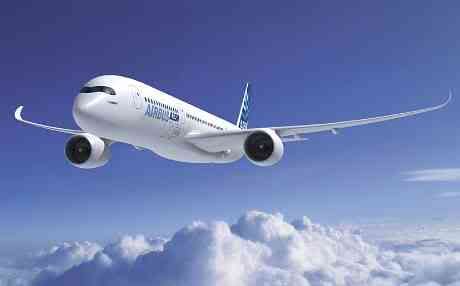European nations give financial guarantees.September 12, 2009
The German government plans to support the planned construction of the Airbus A350 wide body plane with a state guarantee worth EUR1.1 billion euros (USD$1.61 billion).
European governments are planning to provide billions of euros to help Airbus finance the A350 jet despite a ruling earlier this month from the World Trade Organisation that European "launch aid loans" for the A380 and other top-selling planes violated the rules.
Last month, Britain pledged GBP340 million pounds (USD$567.6 million) in loans to help Airbus develop the A350, which is intended to compete with Boeing's much-delayed 787 Dreamliner.
Officials have also said France would provide financing.
Airbus has nearly 500 firm orders from 30 customers for the A350, which it will launch next decade. Company officials estimate the potential market for the aircraft at 2,500.
A further 3,000 jobs would be created in Germany due to the development of the A350, possibly rising to 7,500.
Composites -The Airbus A350 represents a breakthrough in aircraft design because more than 50% of the aircraft’s weight is composite parts. However, recent Airbus crashes which have shocked the world again raise questions about the long term durability of carbon-resin components.
Composites have been used in aircraft design for many years. They significantly reduce aircraft weight and the fuel savings that result are extremely important. Boeing, Airbus, and the USAF are the largest design and manufacturing entities that are integrating composite parts into new aircraft at a rapid pace. If widespread use of composites does not comprise aircraft structural integrity, then everyone wins. The costs of freight transport, travel and fighting in the air drop significantly, and crew and passenger safety have not been compromised. The real world situation, however, is not that straightforward. Composite aircraft parts have come under intense scrutiny and criticism from pilots, air security professionals and aeronautical engineers.

Airbus has rolled out its second complete carbon-fibre test barrel as part of its development programme for the A350 XWB fuselage design.
This 18m (59ft)-long fuselage demonstrator, which Airbus dubs 'Barrel 1B' and describes as "second generation", was assembled in Hamburg and is close to the final design of the A350 fuselage, as it will be used for certification of design principles and sizing methods.
Barrel 1B's diameter is greater than 6m and it is built in three sections. It has been used to develop and validate the complete production process from the manufacture of individual panels, frames and clips, to shell assembly and section assembly and the production of circumferential joints.

